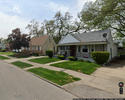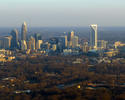In March I bought a modest, two-bedroom 1950 tract house in Madison, Wisconsin. It’s not going to win any awards for cutting-edge design, but it’s solid, respectable, and in a safe, quiet neighborhood with a premium school district. read more »
Housing
The Suburbs Will Thrive or Fail on Their Own Terms
- Login to post comments
Garcetti's Legacy
President Joe Biden has nominated Los Angeles mayor Eric Garcetti as ambassador to India. Assuming the Senate confirms him, Garcetti, who would leave office early (his second term ends in December 2022), might find India familiar in certain respects. Like Mumbai or Delhi, Los Angeles now has massive homeless encampments throughout the city read more »
- Login to post comments
Minorities Dominate Suburban Growth
There continues to be a perception among many that America’s suburbs and exurbs are overwhelmingly White-Non-Hispanic, with little minority population. Nothing could be further from the truth, is indicated by an analysis of major metropolitan area growth, using the City Sector Model read more »
Why California Housing is So Expensive
Although master-planned communities are quite common on Texas, New Mexico, and Arizona, they are few and far between in California thanks to strict land-use laws and an anti-development mentality. read more »
Housing Psychographics
Last week I got a call from young friends who wanted my opinion on whether or not to buy a particular house. It was a simple two bedroom one bath 943 square foot (87 square meter) cottage that was built in 1895. The location was in a fashionable small semi rural town in Sonoma north of San Francisco. It was on the market for $600,000. I said I couldn’t make that choice for them, but I could give them my interpretation of the pros and cons. read more »
- Login to post comments
Jane Jacobs and the Mid-Rise Mania
The next time you travel through a city, see if you can find many four-, five-, or six-story buildings. Chances are, nearly all of the buildings you see will be either low rise (three stories or less) or high-rise (seven stories or more). If you do find any mid-rise, four- to six-story buildings, chances are they were either built before 1910, after 1990, or built by the government. read more »
Demographic Implosion in the San Francisco Bay Area?
As the San Francisco Bay Area (combined statistical area, or CSA, as defined by the Office of Management and Budget) has sprawled into the San Joaquin Valley, all population growth has been in the three Valley metros for two years (Map above). This article describes population trends over the last 10 years in the CSA, which includes the six tidewater (adjacent to the ocean or the Bay) metropolitan areas, traditionally thought of as the Bay Area, including core San Francisco and San Jose as well as Santa Rosa, Napa, Vallejo and Santa Cruz. read more »
The Rust Belt Aesthetic
Overseas competition. Automation replacing industrial labor. The inability to adapt to the global economy. Unions. Even the weather. Many reasons are given for why Rust Belt cities have lagged the rest of the nation in their recovery from their industrial heyday. But there’s one under-recognized but still consequential reason – the poor quality of the Rust Belt aesthetic. Rust Belt cities have never quite been known for their looks, and in an era when looks increasingly matter, they often fall short. read more »
- Login to post comments
A Very Curious Thing is Happening in Austin, Texas
When the nation’s CEOs were being polled about state business climates earlier this year for Chief Executive’s annual rankings of the “Best and Worst States for Business,” there was a lot of concern about Austin, Texas, among the magazine’s conservative-leaning readership. read more »
- Login to post comments
America’s Post-Pandemic Geography
Even as vaccination increases across the United States and an end to the tragedy of the Covid-19 pandemic seems in sight, the economic, fiscal, political, and geographic fallout from the virus cannot be overstated: a massive public health crisis that left more than half a million Americans dead, an economic catastrophe that caused record unemployment and small-business closures, and a seismic political event that surely helped tip the presidential election. The pandemic will pass, and the economy will revive, as it is already doing. read more »
- Login to post comments






















